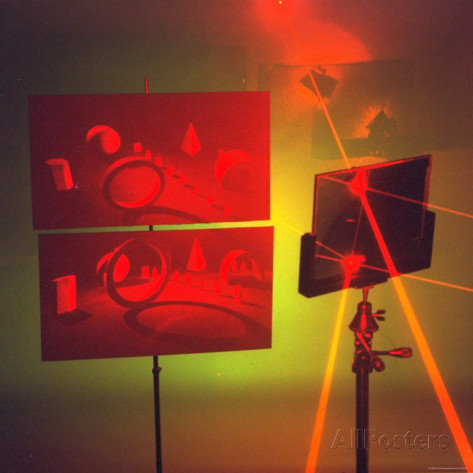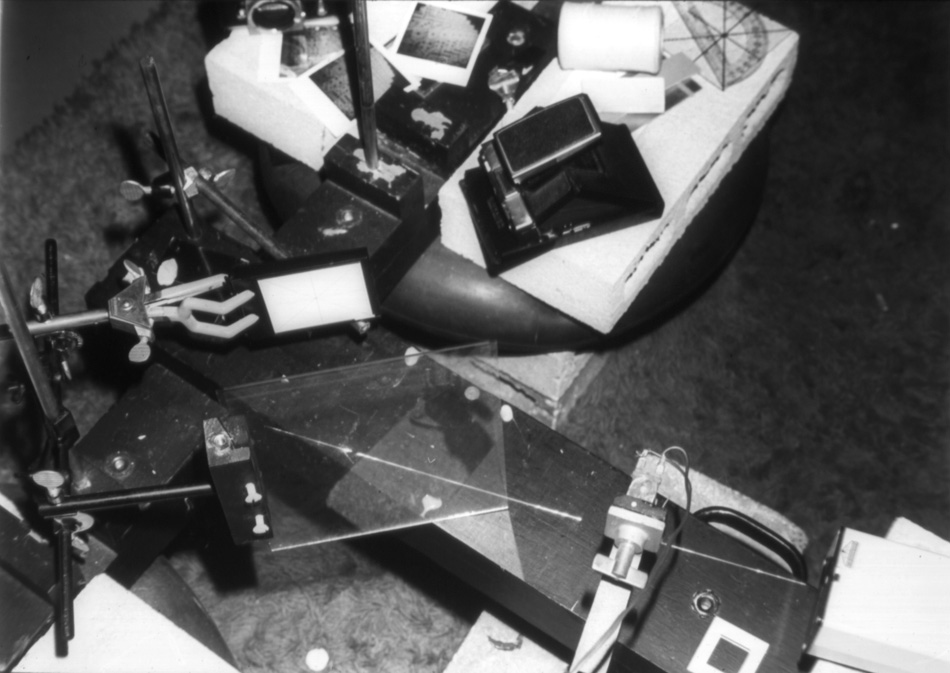

The title of this project may not make immediate sense to the 21st century holographer, as it is a contraction of the words hologram and Polaroid, which had been a ubiquitous type of photography that is now all but obsolete. The origin of this name came about by using the direct positive print capability of the Polaroid SX-70 stock to deliver a photograph of a laser transmission hologram without using a lens.
It is not meant to intrude on Mark Diamond’s independent invention of the identical word he coined for his “Holography Documentary series cast of characters” at about the same time.
The use of an undiverged laser beam propagating backwards through a transmission hologram to conjure up a real image projected onto a screen had been known since the days of Leith and Upatnieks.

If a piece of photographic material had been positioned where the real images are focused on the screens, a print of the object holographed would be produced without the use of lenses.
Here is an overview of a set up to do just that on the Big Beam, which is not necessary:

The less than 1 mW beam from a Spectra-Physics Model 155 Helium-Neon laser heads through a laser transmission hologram, and the real image is projected onto a target card mounted in an SX-70 film pack, held in a three finger clamp. The film pack is moved up, down, left, right, and closer or further from the hologram until the desired image fill the film pack plane. The exposure is made, usually in a fraction of a second, using an old school film SLR camera body with the back open and the lens off to let the laser beam pass though, and then the film pack is placed into the Polaroid SX-70 camera, which ejects the film, passing it though the rollers, bursting the developer pod, and processing the image.
In this digital age, the same trick could be done with a dSLR with the lens removed. Using a wek laser will not damage the sensor.
<back PBONUS PROJECT 2: Holoroids Home>
<Introduction> <Equipment> <The Big Beam> <Project 1a: In-line "Gabor" type Holograms> < Project 1b: Off-Axis Holograms> < Project 2: Single Beam Transmission Deep Scene Hologram> <Project 3: Division of Amplitude Hologram> <Project 4: Pseudo-Achromat Transfer Hologram> <Project 5: Cylindrical Hologram> <Project 6: Single Beam Reflection Hologram> <Project 7: Image Plane Reflection Hologram> <Bonus Project 1: Diffraction Gratings> <Bonus Project 2: Holoroids>